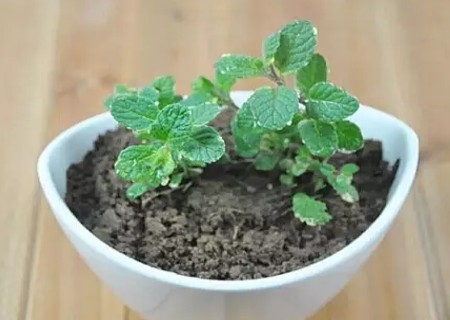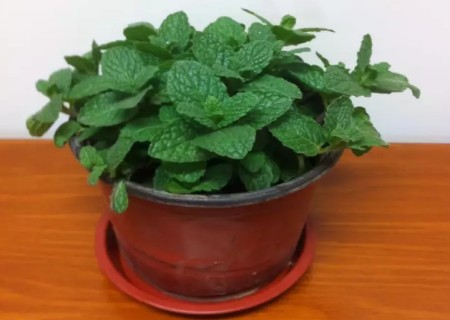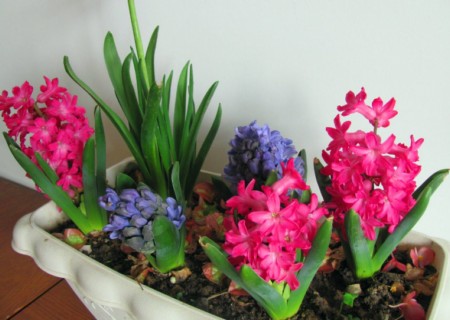How to grow potted mint grass
Peppermint is a collection of ornamental and edible herbs, which can be described as "both moral and talented". Mint grows very fast, not only the potted plant has a high ornamental value, but also can be picked and eaten at any time, making tea or vegetables is a good choice.
Peppermint, also known as southern mint, night incense, water mint, etc., is the general name of perennial root herbs of the mint genus of Labiatae. It is native to Europe and the Mediterranean coast, and is now cultivated all over the world. We mainly use its stems and leaves to extract essential oils as natural spices. Let's take a look at how to grow potted mint.

The cultivation of mint soil with loose, fertile, well-drained sandy soil is better; peppermint requires more water, and can be irrigated every day on the balcony; peppermint grows fast and should be turned over once a year in spring.
Peppermint likes warm climate, the most suitable temperature for growth is 20-30 degrees, like places with bright light, plenty of sunshine is conducive to the formation of peppermint aroma. Mint kept indoors should be moved to a sunny place for one or two days every few days, and then back indoors. At the same time, it is also very hardy, even if the winter temperature drops to about 2 degrees, the plant begins to wither, enter dormancy, and can sprout and grow again the next year.
1. Soil
Peppermint soil requirements are not very strict, except for sand, excessive viscosity, excessive pH and low-lying poor drainage soil, the general soil can be planted, sandy loam, alluvial soil is better. The suitable pH value of soil is 6-7.5.
2. Sunshine
As a potted plant, peppermint is generally cultured in a semi-shaded environment, that is, astigmatism rather than direct sunlight. If you put it on the balcony, you can put it at the root of the back sun wall, which can cover part of the sun. if it is indoor breeding, it is best to put it 3 meters away from the Chaoyang balcony and let it receive astigmatism.
3. Temperature
Peppermint has strong adaptability to temperature, its rhizome survives the winter and can withstand the low temperature of-15 ℃. The optimum temperature for its growth is 25 ℃ ~ 30 ℃. The growth was slow when the temperature was below 15 ℃ and accelerated when the temperature was higher than 20 ℃. At 20 ℃ ~ 30 ℃, as long as water and fertilizer are suitable, the higher the temperature, the faster the growth.
4. Watering
Peppermint likes the moist soil environment and is more resistant to moisture, especially during the growth period, but the amount of water should not be too large, and waterlogging is strictly prohibited. Usually watering should maintain the habit of "no dry, no watering, watering thoroughly". If you use Amoy rice water, it will be more beneficial to the growth of peppermint. In winter, it is necessary to reduce the number of watering and the amount of water.
5. Fertilizer
The cultivation of peppermint needs fertilizer, and peppermint likes fertilizer, which is topdressing once a month during its growth period. Nitrogen fertilizer is the main fertilizer, and phosphorus and potassium fertilizer can be applied properly. If the branches and leaves need to be harvested during the growth period, topdressing should be carried out during the harvest to promote the plant to restore a good plant shape.
Tips:
If the potted mint is raised well, it will also repay you-it will produce beautiful little lavender flowers. And don't be reluctant to prune, the more this plant is trimmed, the better it grows!
Time: 2019-05-31 Click:
- Prev

Mint, alias Rendan grass, perennial herb. The plant is 30-60 cm tall, leaves opposite, lanceolate or oval, hairy and oily on both sides. After the stems and leaves are crushed by hand, they have a strong fragrance and a sense of pungent coolness, which is the main medicinal part. It can be planted or potted in the courtyard as a material for flower diameter allocation.
- Next

Post-anthesis culture method of potted hyacinth
Hyacinth is a flower species often cultivated by people. Potted hyacinth usually keeps the soil slightly wet and avoids being too wet or stagnant water, so that it can generally bloom in March of the following year. On the other hand, the method of pot planting is basically the same as that of planting in the ground, using 14 bulbs per pot of loose soil, applying sufficient basic fertilizer, putting it outside in the sunny place, and topdressing during the growing period.
Related
- Fuxing push coffee new agricultural production and marketing class: lack of small-scale processing plants
- Jujube rice field leisure farm deep ploughing Yilan for five years to create a space for organic food and play
- Nongyu Farm-A trial of organic papaya for brave women with advanced technology
- Four points for attention in the prevention and control of diseases and insect pests of edible fungi
- How to add nutrient solution to Edible Fungi
- Is there any good way to control edible fungus mites?
- Open Inoculation Technology of Edible Fungi
- Is there any clever way to use fertilizer for edible fungus in winter?
- What agents are used to kill the pathogens of edible fungi in the mushroom shed?
- Rapid drying of Edible Fungi

